Election Day is just under three months from now, and it's clear the role of government is shaping up as a key issue. Across the board -- from local elections to the one which will determine our next president -- voters are considering the place of government in creating jobs, assisting the less fortunate, and ensuring the health and safety of our nation's youth.
In public health, we're mindful of this consideration each and every day. Consider the case of alcohol, the number one drug among young people, and responsible for 4,700 deaths among those under 21 every year. Through policy, it is possible to dramatically reduce these deaths by preventing youth from starting to drink.
With this in mind, we recently examined how each of the 50 states is addressing youth exposure to alcohol advertising. Specifically, we looked at the measures states could be using, specifically the extent to which states' alcohol advertising laws incorporate the following:
- Prohibit false or misleading advertising;
- Prohibit alcohol advertising that targets minors;
- Establish jurisdiction over in-state electronic media (TV and radio);
- Restrict outdoor alcohol advertising in locations where children are likely to be present;
- Restrict alcohol advertising on alcohol retail outlet windows and outside areas;
- Prohibit alcohol advertising on college campuses;
- Restrict alcohol sponsorship of civic events; and,
- Limit the alcohol industry's ability to provide free goods (giveaways).
The results were dismal. Twenty-two states had no best practices across the eight policies. Even the state with the "most" (Virginia) had only five. It's like looking at a class of fifty students where the top student scores a barely passing grade. As we concluded at the time, given the fact states have substantial jurisdiction over alcohol marketing as outlined in the 21st Amendment of the Constitution, it's a pity to see how inactive they are in this legislative and regulatory arena.
Here's why this matters. At least 14 long-term studies have found that the more young people are exposed to alcohol advertising and marketing, the more likely they are to drink, or if they are already drinking, to drink more. And if young people like alcohol ads, they are more likely to have positive expectancies about alcohol use and to intend to drink or to drink.
The consequences are severe. Alcohol kills more teenagers every year than any illegal drug, and the cost of underage drinking in our society is conservatively estimated by the CDC at $27 billion annually. Adolescent alcohol use plays a substantial role in all three leading causes of death among youth -- unintentional injuries (including motor vehicle fatalities and drownings), suicides, and homicide, and is also associated with risky sexual behavior and addiction.
Federal regulations do not specifically prohibit alcohol advertisements that appeal to youth. Currently in the U.S., there is a self-imposed and self-regulated commitment on behalf of industry (trade groups for beer, wine and distilled spirits) to place alcohol ads in media venues only when underage persons comprise less than 28.4 percent percent of the audience.
Our Center monitors the marketing practices of the alcohol industry to determine how well they are adhering to this commitment. Here's what we know:
- Television: Youth exposure to alcohol advertising on U.S. television increased 71 percent between 2001 and 2009, growing at a rate faster than the exposure of either adults ages 21 and above or young adults ages 21 to 34. In 2009, 13 percent of youth exposure came from advertising placed in violation of the industry's voluntary threshold.
- Radio: Close to one-third of alcohol advertising placements occur when proportionately more youth were listening than adults age 21 and above. Approximately 9 percent of all alcohol product advertisements aired on programming with underage audiences in violation of the industry's voluntary standard.
- Magazines: The content of alcohol ads placed in magazines is actually more likely to be in violation of industry guidelines if the ad appears in a magazine with sizeable youth readership. Examples of violations include showing ads appearing to target a primarily underage audience, highlighting the high alcohol content of a product, or portraying alcohol consumption in conjunction with activities requiring a high degree of alertness or coordination.
- Online: Despite the fact youth are overrepresented on Facebook (13- to 20-year-olds make up only 11.3 percent of the U.S. population but almost 18.2 percent of Facebook users), as of August 2012, 10 leading alcohol brands on Facebook had more than 27.5 million people "liking" their brand pages. We also tested the adequacy of the industry's "age affirmation" technology that is aimed at preventing exposure of this marketing to underage youth, and found widespread examples of its ineffectiveness, in the form of pictures that clearly underage young people had posted of themselves on alcohol company-sponsored social media pages.
With the evidence clear that the industry's threshold has been ineffective in reducing youth exposure on television, either in absolute or in relative terms, a number of groups and officials, including the National Research Council, the Institute of Medicine and 24 state attorneys general, have called upon the alcohol industry to strengthen its standard and meet a "proportional" 15 percent placement standard, given that the group most at risk for underage drinking -- 12- to 20-year-olds -- is less than 15 percent of the U.S. population.
The world of advertising and marketing is changing all around us, and alcohol regulation and enforcement are not keeping up. The question is clear: Is government doing enough to protect our children from the influence of alcohol marketing? We know how to do it. And with 4,700 young people dying every year as a result of alcohol, it's time we put the health and safety of children first.